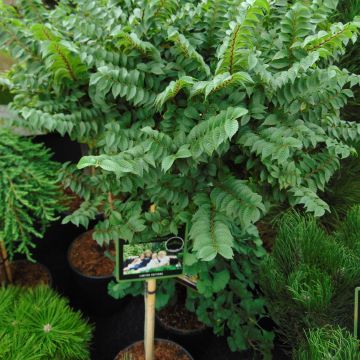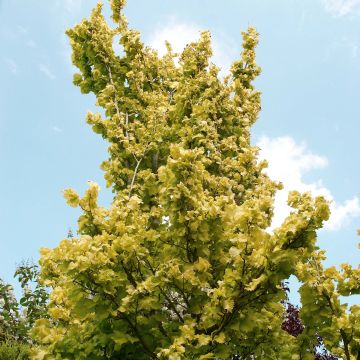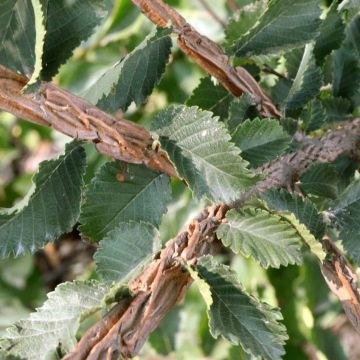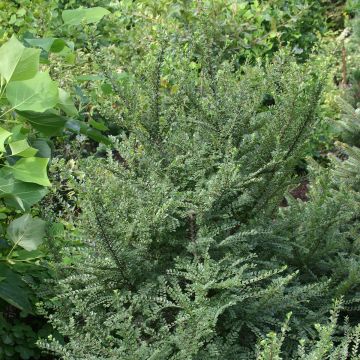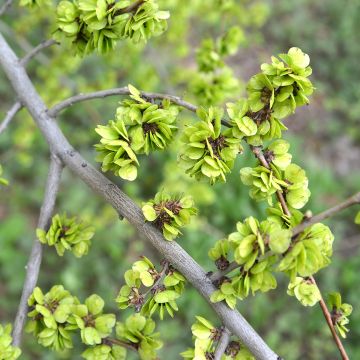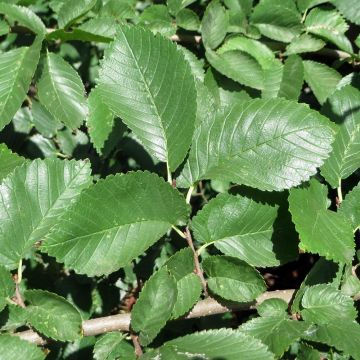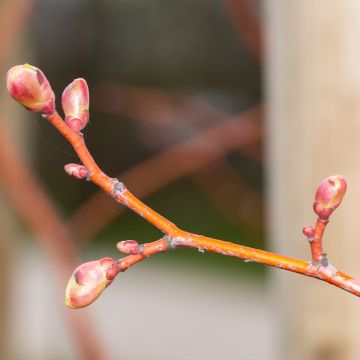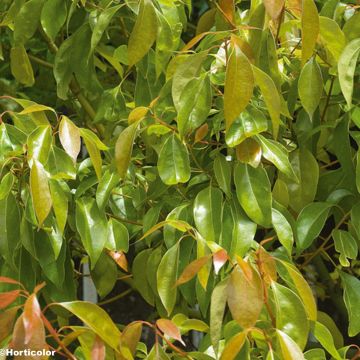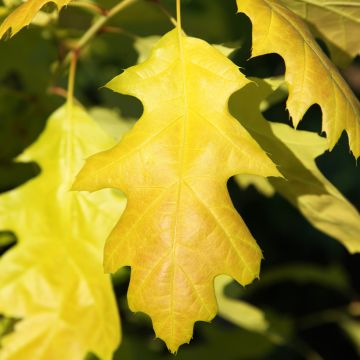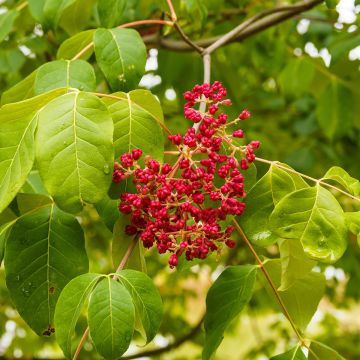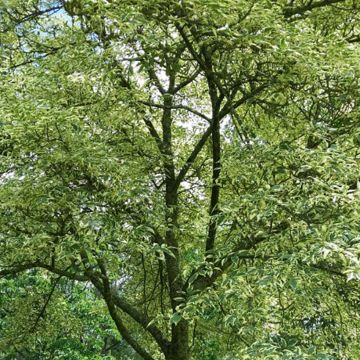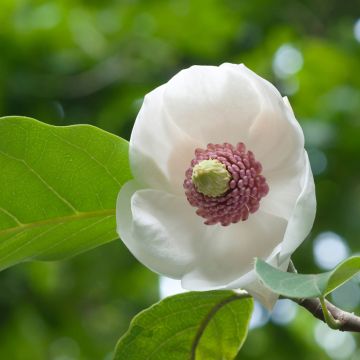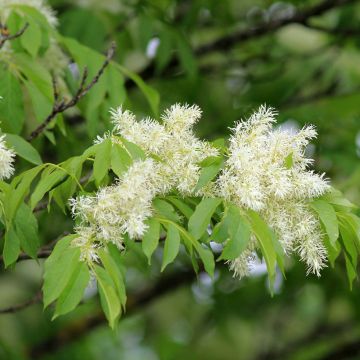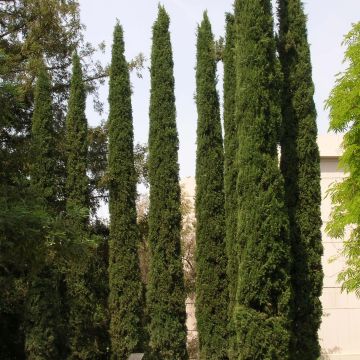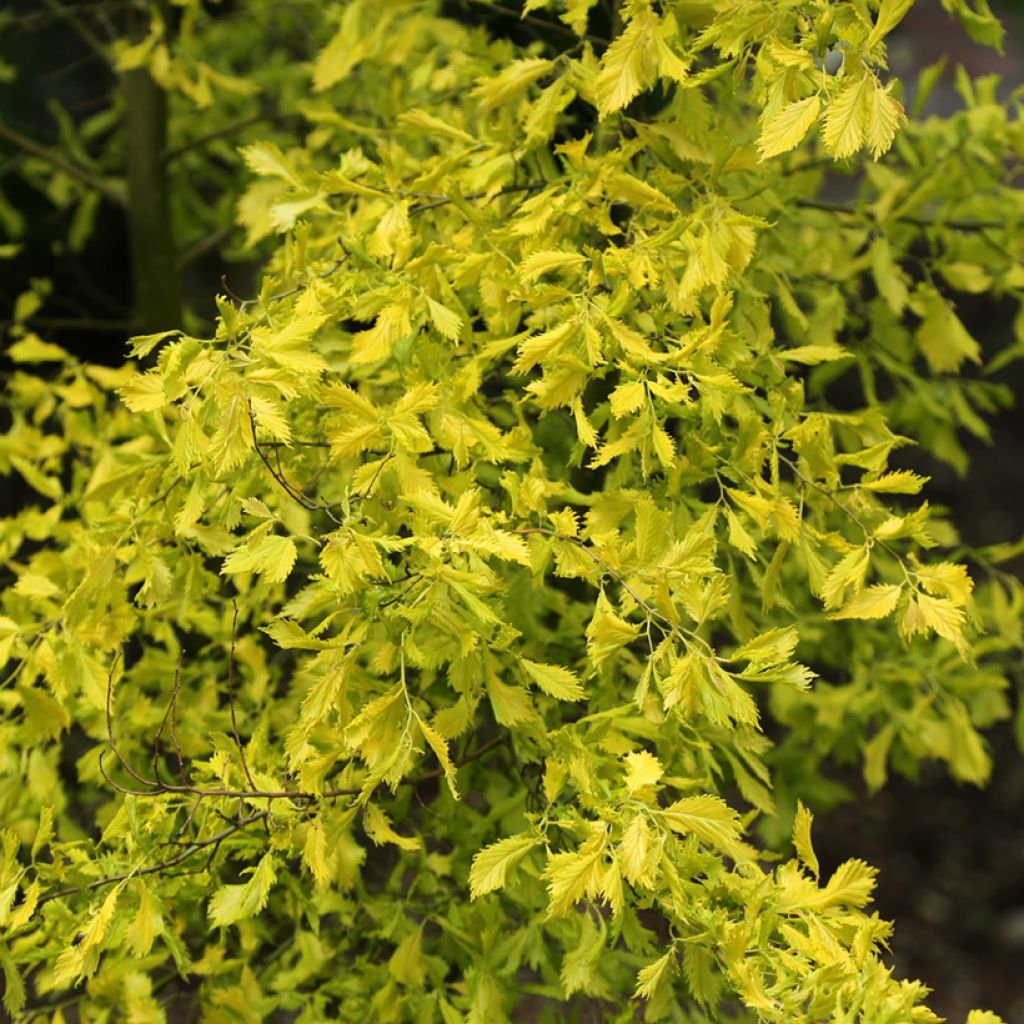

Ulmus minor Viminalis Aurea - Elm
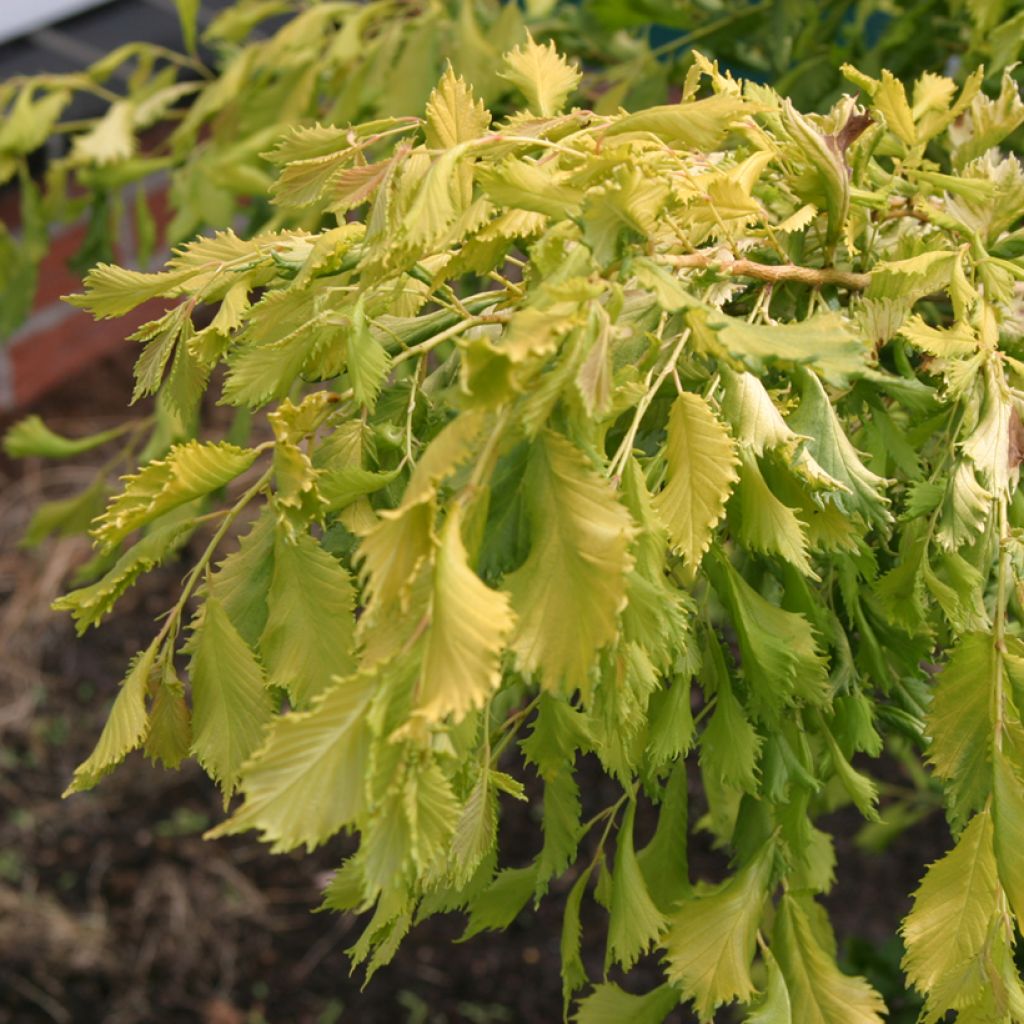

Ulmus minor Viminalis Aurea - Elm
Ulmus minor Viminalis Aurea - Elm
Ulmus minor Viminalis Aurea
Field Elm, Smooth-leaved Elm, Common Elm
Special offer!
Receive a €20 voucher for any order over €90 (excluding delivery costs, credit notes, and plastic-free options)!
1- Add your favorite plants to your cart.
2- Once you have reached €90, confirm your order (you can even choose the delivery date!).
3- As soon as your order is shipped, you will receive an email containing your voucher code, valid for 3 months (90 days).
Your voucher is unique and can only be used once, for any order with a minimum value of €20, excluding delivery costs.
Can be combined with other current offers, non-divisible and non-refundable.
Home or relay delivery (depending on size and destination)
Schedule delivery date,
and select date in basket
This plant carries a 24 months recovery warranty
More information
We guarantee the quality of our plants for a full growing cycle, and will replace at our expense any plant that fails to recover under normal climatic and planting conditions.
Would this plant suit my garden?
Set up your Plantfit profile →
Description
Ulmus minor 'Viminalis Aurea', commonly known as the Golden-leaved Small-leaved Elm, is a small tree sought after for its decorative foliage and compact size. Suitable for smaller gardens, this cultivar stands out with its strongly toothed, bronze to golden leaves, which bring a bright touch to the garden, especially early in the season. Perfectly adapted to our climates, very hardy, and able to thrive in a wide range of neutral to alkaline soils, including heavy, chalky, and fairly dry soils, this tree is unfortunately susceptible to Dutch elm disease.
Ulmus minor 'Viminalis Aurea' is a cultivar selected before 1866 by Egide Rosseels from Leuven (Belgium), who is also credited with the Ulmus 'Viminalis'. The species, Ulmus minor (syn. Ulmus campestris), is native to a vast area covering Europe, Asia Minor, and North Africa. It belongs to the Ulmaceae family. Nowadays, the Field Elm can still be found here and there, in the form of coppices regularly cut back due to the disease. A few rare individuals seem to escape Dutch elm disease, and the species also survives in the form of attractive horticultural varieties with reduced growth.
The 'Viminalis Aurea' elm forms a large shrub or a small tree with an upright habit and an irregular crown. Its growth is quite fast, reaching a height of 2 to 5 m and a spread of 1 to 3 m depending on the growing conditions. The bark covering its trunk and older branches is ash grey and quite decorative. The branches of this variety are flexible, somewhat like willow branches. The obovate leaves, smaller and shinier than those of other elms, measure between 4 and 7 cm in length. They have many small teeth deeply incised along the edges. These leaves are yellow to golden bronze in early summer, then they turn greenish over the weeks. They give the plant a unique and changing appearance throughout the seasons. The autumn foliage is more or less bronze, with a slight golden hue. It dries up and falls in autumn. Ulmus minor 'Viminalis Aurea' does not produce spectacular flowers or fruits; this variety is mainly appreciated for its decorative foliage. Preferring neutral to chalky soils, it appreciates a certain degree of moisture, but can tolerate drier conditions when deeply rooted.
This 'Viminalis Aurea' Elm is suitable for gardens of all sizes. This small tree can be planted as a standalone specimen, in a grove, or in a mixed hedge. Its golden foliage complements darker foliage as well as colourful blooms. It can be planted alongside a Viburnum opulus 'Oh Canada', a Cotinus coggygria 'Royal Purple', a purple hazelnut, a large Weigela florida 'Rosea', and a Berberis ottawensis 'Superba' with purple-violet foliage, for example.
Report an error about the product description
Ulmus minor Viminalis Aurea - Elm in pictures


Plant habit
Flowering
Foliage
Botanical data
Ulmus
minor
Viminalis Aurea
Ulmaceae
Field Elm, Smooth-leaved Elm, Common Elm
Ulmus Viminalis Aurea
Cultivar or hybrid
Other Ulmus - Elm
View all →Planting and care
Ulmus minor 'Viminalis Aurea' is preferably planted in autumn in ordinary soil, even heavy or chalky soil. While it grows faster in moist soil, it adapts well to drier soil once it is well rooted. Plant it in a sunny or semi-shaded location, if possible without direct sunlight. This tree adapts to all climates, but does not like acidic soil. Water and mulch in the first summers to help it establish. Prune in winter to balance its branches if necessary, and during the season to remove branches with completely green leaves, which can occur with this variety.
In the 1970s, a Dutch elm disease epidemic greatly reduced the population of elms in Europe. Following this event, a monitoring program was established. The disease is caused by a fungus called Dutch elm disease (a fungal disease) that is transmitted by a beetle called the elm bark beetle. The first symptoms appear on a branch of the crown and are characterised by wilting and curling of the leaves during the growing season. Generally, the elm bark beetles infest large specimens exceeding 2 m in height. Only organic solutions remain effective, such as pheromone traps or the introduction of elm bark beetle predators.
Planting period
Intended location
Care
This item has not been reviewed yet - be the first to leave a review about it.
Similar products
Haven't found what you were looking for?
Hardiness is the lowest winter temperature a plant can endure without suffering serious damage or even dying. However, hardiness is affected by location (a sheltered area, such as a patio), protection (winter cover) and soil type (hardiness is improved by well-drained soil).

Photo Sharing Terms & Conditions
In order to encourage gardeners to interact and share their experiences, Promesse de fleurs offers various media enabling content to be uploaded onto its Site - in particular via the ‘Photo sharing’ module.
The User agrees to refrain from:
- Posting any content that is illegal, prejudicial, insulting, racist, inciteful to hatred, revisionist, contrary to public decency, that infringes on privacy or on the privacy rights of third parties, in particular the publicity rights of persons and goods, intellectual property rights, or the right to privacy.
- Submitting content on behalf of a third party;
- Impersonate the identity of a third party and/or publish any personal information about a third party;
In general, the User undertakes to refrain from any unethical behaviour.
All Content (in particular text, comments, files, images, photos, videos, creative works, etc.), which may be subject to property or intellectual property rights, image or other private rights, shall remain the property of the User, subject to the limited rights granted by the terms of the licence granted by Promesse de fleurs as stated below. Users are at liberty to publish or not to publish such Content on the Site, notably via the ‘Photo Sharing’ facility, and accept that this Content shall be made public and freely accessible, notably on the Internet.
Users further acknowledge, undertake to have ,and guarantee that they hold all necessary rights and permissions to publish such material on the Site, in particular with regard to the legislation in force pertaining to any privacy, property, intellectual property, image, or contractual rights, or rights of any other nature. By publishing such Content on the Site, Users acknowledge accepting full liability as publishers of the Content within the meaning of the law, and grant Promesse de fleurs, free of charge, an inclusive, worldwide licence for the said Content for the entire duration of its publication, including all reproduction, representation, up/downloading, displaying, performing, transmission, and storage rights.
Users also grant permission for their name to be linked to the Content and accept that this link may not always be made available.
By engaging in posting material, Users consent to their Content becoming automatically accessible on the Internet, in particular on other sites and/or blogs and/or web pages of the Promesse de fleurs site, including in particular social pages and the Promesse de fleurs catalogue.
Users may secure the removal of entrusted content free of charge by issuing a simple request via our contact form.
The flowering period indicated on our website applies to countries and regions located in USDA zone 8 (France, the United Kingdom, Ireland, the Netherlands, etc.)
It will vary according to where you live:
- In zones 9 to 10 (Italy, Spain, Greece, etc.), flowering will occur about 2 to 4 weeks earlier.
- In zones 6 to 7 (Germany, Poland, Slovenia, and lower mountainous regions), flowering will be delayed by 2 to 3 weeks.
- In zone 5 (Central Europe, Scandinavia), blooming will be delayed by 3 to 5 weeks.
In temperate climates, pruning of spring-flowering shrubs (forsythia, spireas, etc.) should be done just after flowering.
Pruning of summer-flowering shrubs (Indian Lilac, Perovskia, etc.) can be done in winter or spring.
In cold regions as well as with frost-sensitive plants, avoid pruning too early when severe frosts may still occur.
The planting period indicated on our website applies to countries and regions located in USDA zone 8 (France, United Kingdom, Ireland, Netherlands).
It will vary according to where you live:
- In Mediterranean zones (Marseille, Madrid, Milan, etc.), autumn and winter are the best planting periods.
- In continental zones (Strasbourg, Munich, Vienna, etc.), delay planting by 2 to 3 weeks in spring and bring it forward by 2 to 4 weeks in autumn.
- In mountainous regions (the Alps, Pyrenees, Carpathians, etc.), it is best to plant in late spring (May-June) or late summer (August-September).
The harvesting period indicated on our website applies to countries and regions in USDA zone 8 (France, England, Ireland, the Netherlands).
In colder areas (Scandinavia, Poland, Austria...) fruit and vegetable harvests are likely to be delayed by 3-4 weeks.
In warmer areas (Italy, Spain, Greece, etc.), harvesting will probably take place earlier, depending on weather conditions.
The sowing periods indicated on our website apply to countries and regions within USDA Zone 8 (France, UK, Ireland, Netherlands).
In colder areas (Scandinavia, Poland, Austria...), delay any outdoor sowing by 3-4 weeks, or sow under glass.
In warmer climes (Italy, Spain, Greece, etc.), bring outdoor sowing forward by a few weeks.






























